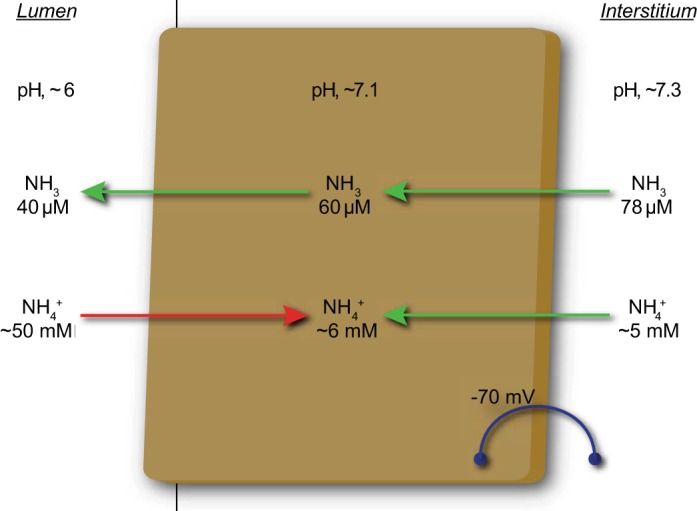Fig. 7.

Directions of NH3 and NH4+ transport across the apical and basolateral plasma membrane of collecting duct cells. Model shows electrochemical gradients for NH3 and NH4+ movement across apical and basolateral plasma membranes of collecting duct cells. Because NH3 is uncharged, membrane voltage does not directly affect NH3 transport. As a result, NH3 movement from the interstitium into the cell cytoplasm and across the apical plasma membrane is driven solely by the chemical concentration gradients. For NH4+, electrochemical gradients, driven largely by intracellular electronegativity, favor NH4+ uptake across the basolateral plasma membrane. Across the apical plasma membrane, intracellular electronegativity would facilitate lumen-to-cytoplasm NH4+ movement. Consequently, an electrogenic NH4+ transport mechanism is highly unlikely to be able to contribute to collecting duct ammonia secretion. Arrows show likely movements of NH3 and NH4+ transport across apical and basolateral plasma membranes given typical total ammonia concentrations and pH in interstitium, cytoplasm, and lumen and cell membrane voltage. Arrows in green shown transport consistent with known ammonia movement, and arrow in red, showing luminal NH4+ reabsorption, shows transport unlikely to contribute to ammonia secretion.
